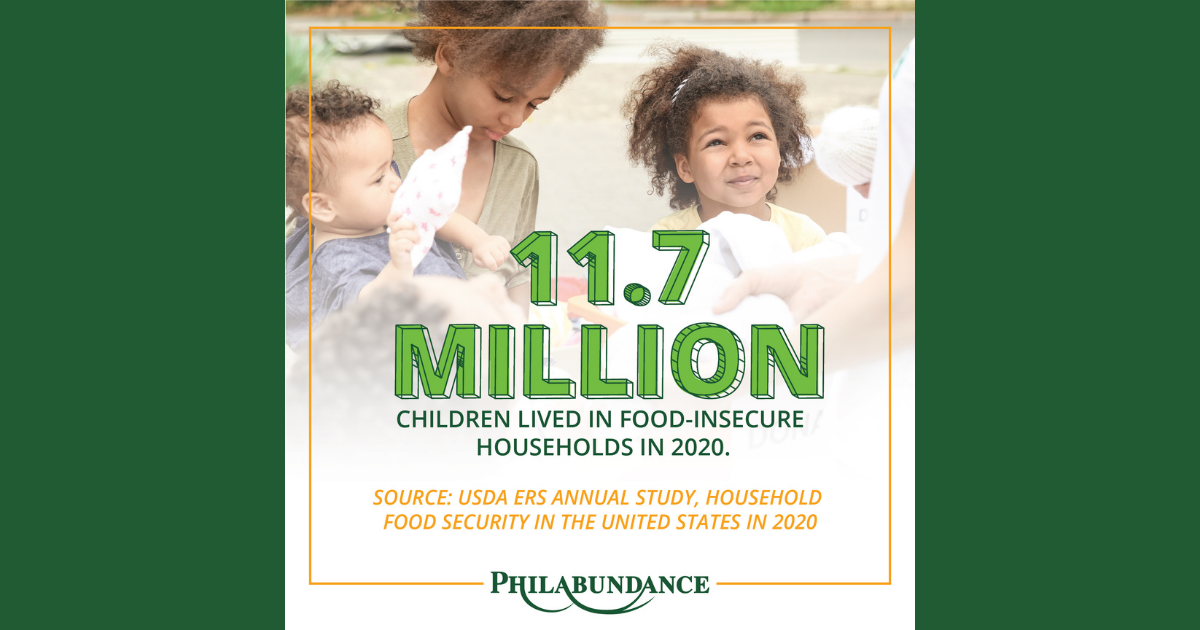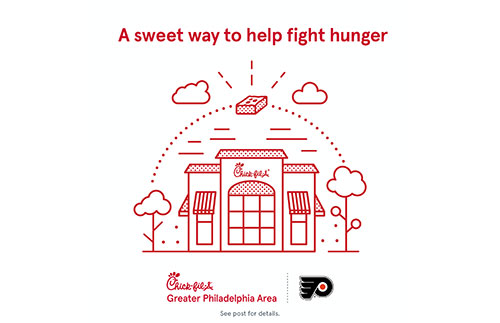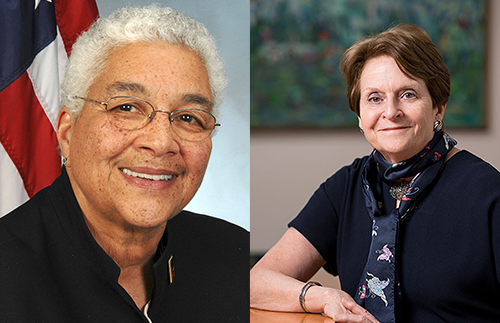Last week, the U.S. Department of Agriculture (USDA) released their Food Insecurity Report highlighting U.S. household food insecurity rates in 2020. This report sheds light on the impact that the COVID-19 pandemic had on nationwide food insecurity last year. Food insecurity refers to a household’s inability to afford enough nutritious food during the course of a year due to a lack of resources.
Historically, this report has always exposed an unacceptably high rate of food insecurity, and 2020 was no different. We learned that 38.3 million people in the U.S. were food insecure in 2020. Additionally, the overall national food insecurity rate did not change between 2019 and 2020 – with over 1 in 10 households (10.5%) in America experiencing food insecurity. Still, the USDA recommends that “more research is needed to understand the dynamics of food insecurity and other food hardships in U.S. households during the pandemic.”
Philabundance was surprised to see the overall food insecurity rate remain unchanged, as we have seen a clear increase in need during the pandemic. Philabundance distributed 55 million pounds of food in 2020, which is double what we distributed in 2019, through a network of 350 agency partners. Feeding America reported a 60% increase in the number of people served by food banks in 2020; 40% were people using the emergency food system for the first time.
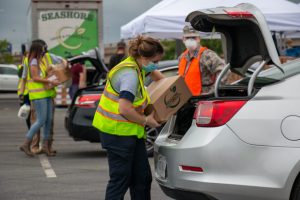
The reported rates may underestimate the reality of hunger in the U.S., in part because data collection may have been disrupted by the pandemic. But they also likely speak to the indispensable role that federal nutrition programs and the charitable food network have played (and continue to play) throughout the pandemic. In response to the COVID-19 pandemic, significant changes were made to existing nutrition assistance programs, federal and state benefits expanded, new nutrition assistance programs were created and charitable organizations responded robustly. The USDA report implies that these substantial investments in safety net programs and emergency food services helped mitigate hunger during the height of the pandemic.
According to a recently released Feeding America report, at least 60 million people (1 in 5 people) turned to food banks, food pantries and other private food assistance programs in 2020 in the midst of the health and economic crisis caused by the COVID-19 pandemic. This was a 50% increase compared to 2019. The fact that the number of people seeking assistance vastly increased while the overall food insecurity rate did not is a testament to the importance of the charitable food network. We at Philabundance are heartened by the unchanged food insecurity rate overall because it shows that we can have an impact on hunger when government steps up and nonprofits like Philabundance have the resources to feed people in need. While the food insecurity rate of 10.5% is unacceptably high, without the government support and our generous donors, these numbers could have been much higher.
Although the overall food insecurity rate remained unchanged from 2019 to 2020, food insecurity increased significantly among many vulnerable populations – especially families with children and people of color. While food insecurity decreased for white households and single-person households, the pandemic exacerbated hunger for households with children, Black and Hispanic households and low-income households. Nationally, racial disparities have widened, with 21.7% of Black households and 17.2% of Hispanic households experiencing food insecurity (compared to 19.1% and 15.6% in 2019, respectively).
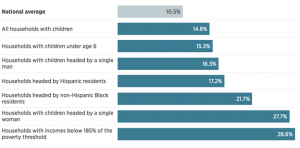
Households Where Food Insecurity is Higher than the National Average
Chart Source: Philadelphia Inquirer; Data Source: United States Department of Agriculture’s Economic Research Service (ERS)
The data clearly highlights how COVID-19 has exposed and exacerbated existing systemic inequities. Philabundance CEO Loree Jones told the Philadelphia Inquirer that she is not surprised by these troubling increases. “We know that our most vulnerable folks are children and people of color,” she said. “The pandemic hit people of color and poor folks hard.”
With over 38 million people facing food insecurity, there is much work to be done to alleviate hunger and reduce existing disparities in our country. The people we serve are facing a looming cliff as some pandemic relief programs like unemployment benefits and renter’s assistance begin to end. We fear that there will be a spike in hunger as benefits are prematurely rolled back. To combat this, long-term investments in safety net programs are needed, as the people we serve are going to be among the last to recover from the economic fallout of the pandemic.
September is Hunger Action Month. Please take action with us as we urge our government to make permanent the temporary expansions of benefits enacted in response to the pandemic.

